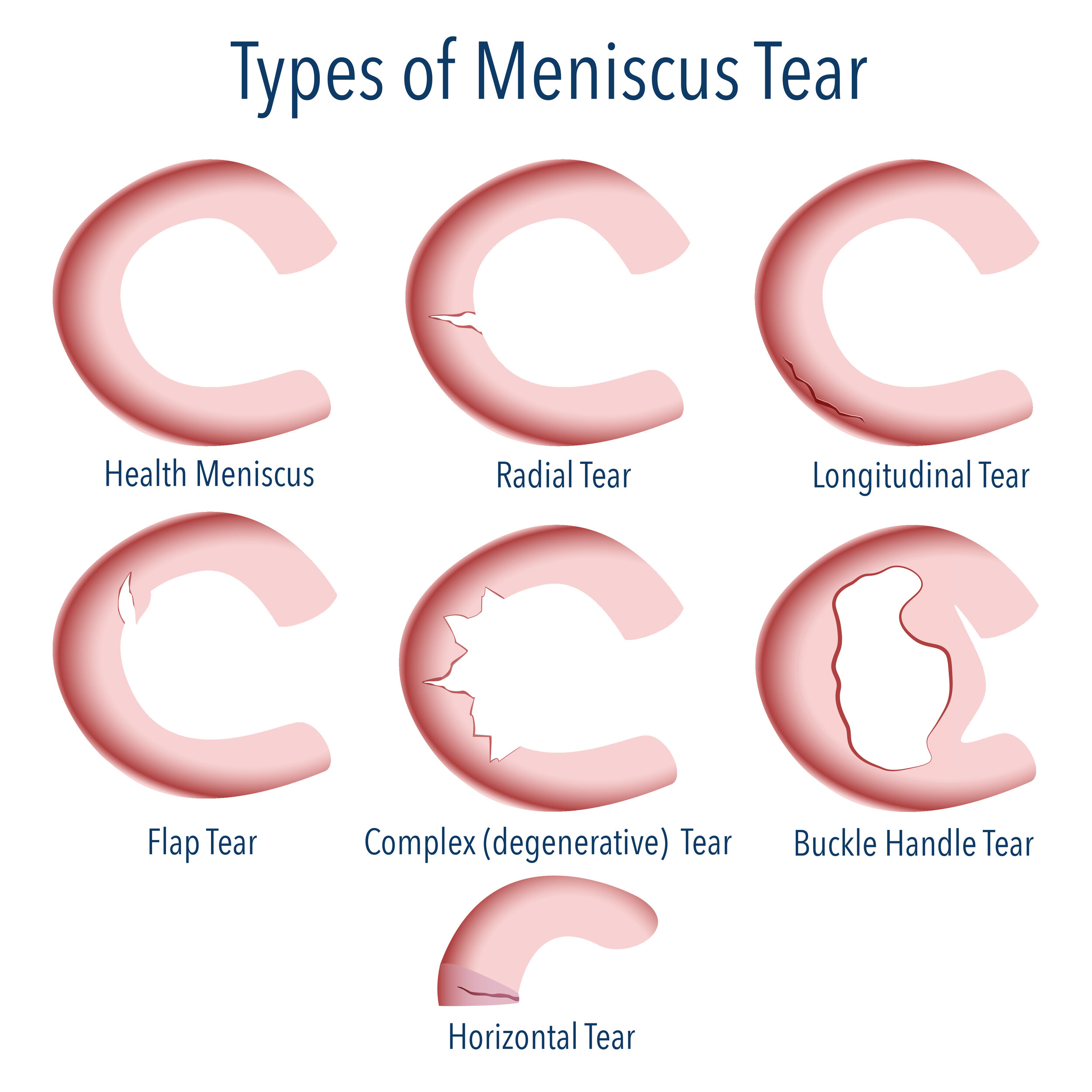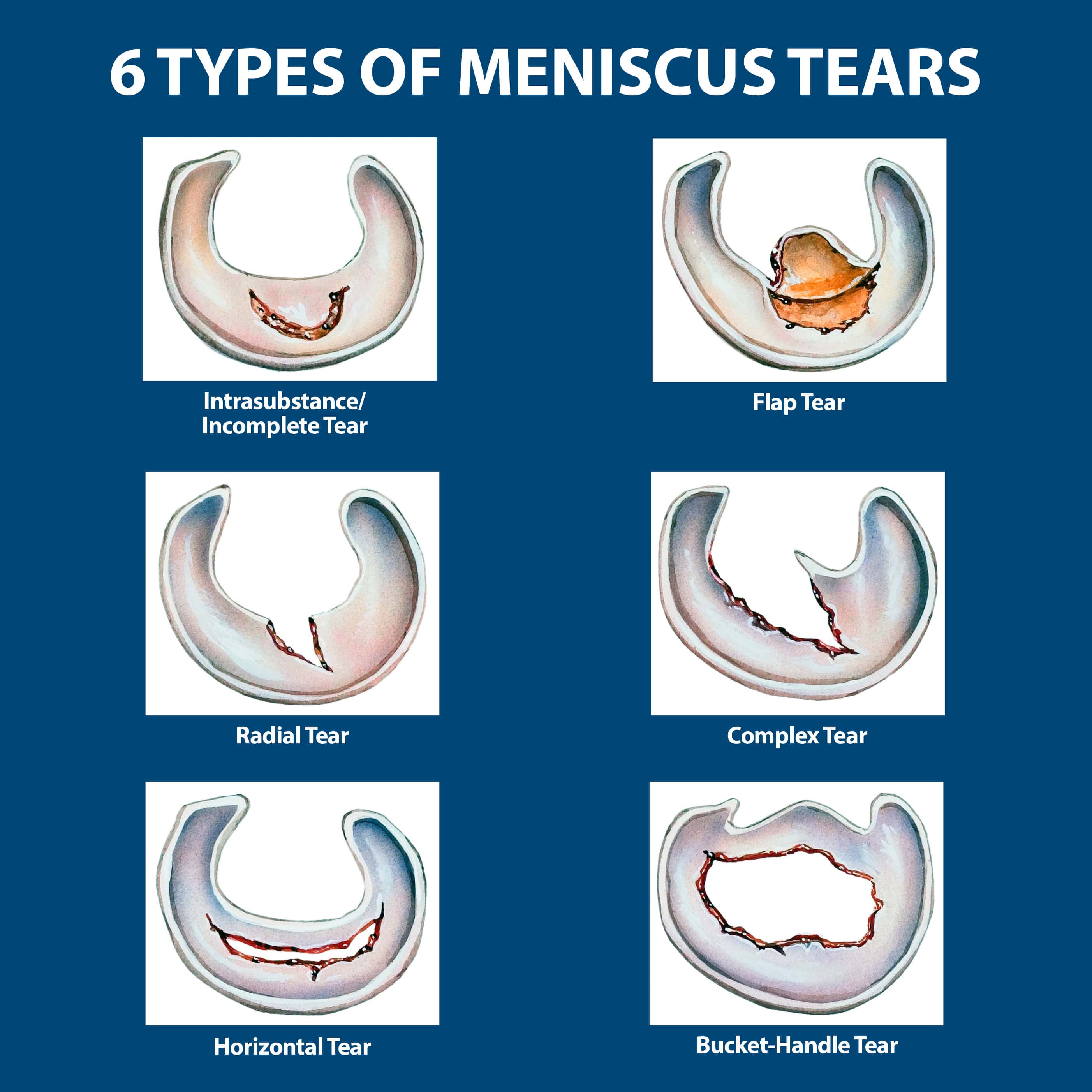Anatomy and Function of the Meniscus: Meniscus Tear

The meniscus is a C-shaped piece of cartilage that acts as a shock absorber and stabilizer in the knee joint. It sits between the femur (thigh bone) and the tibia (shin bone), providing a smooth surface for the bones to glide over each other.
Structure and Location of the Meniscus
The meniscus is composed of tough, rubbery fibrocartilage, which is a type of tissue that is stronger than regular cartilage. It is thicker on the outer edge and thinner on the inner edge, resembling a crescent moon. There are two menisci in each knee: the medial meniscus, which is on the inner side of the knee, and the lateral meniscus, which is on the outer side.
Role of the Meniscus in Knee Function
The meniscus plays a vital role in maintaining the health and function of the knee joint. Its primary functions include:
- Cushioning: The meniscus acts as a shock absorber, absorbing forces that are transmitted through the knee joint during activities like walking, running, and jumping. This helps to protect the joint from damage.
- Shock Absorption: By distributing the weight and force evenly across the joint, the meniscus reduces the stress on the cartilage and bones. This is especially important during high-impact activities.
- Joint Stability: The meniscus helps to stabilize the knee joint by deepening the socket that the femur fits into. This improves the fit and stability of the joint, reducing the risk of dislocation.
Types of Menisci and Their Specific Functions
The medial and lateral menisci have distinct shapes and functions:
- Medial Meniscus: The medial meniscus is C-shaped and larger than the lateral meniscus. It is more prone to injury because it is attached to the medial collateral ligament, which helps to stabilize the knee joint. The medial meniscus helps to distribute weight and absorb shock, particularly during activities that involve twisting or rotating the knee.
- Lateral Meniscus: The lateral meniscus is more oval-shaped and smaller than the medial meniscus. It is less prone to injury because it is not attached to any ligaments. The lateral meniscus plays a role in stabilizing the knee joint and absorbing shock, especially during activities that involve lateral movements.
Causes and Risk Factors of Meniscus Tears

Meniscus tears are common injuries that can occur due to a variety of factors, including sports injuries, degenerative changes, and trauma. Understanding the causes and risk factors associated with meniscus tears is crucial for prevention and effective management.
Common Causes of Meniscus Tears
Meniscus tears can occur due to a variety of mechanisms, including:
- Sports Injuries: Activities involving twisting, pivoting, and sudden changes in direction, such as football, basketball, and skiing, can put significant stress on the meniscus, leading to tears.
- Degenerative Changes: As we age, the meniscus can wear down and become more susceptible to tears. This is often due to years of repetitive stress or overuse.
- Trauma: Direct impact to the knee, such as a fall or a direct blow, can cause a meniscus tear. This type of injury can occur in any situation, not just during sports.
Risk Factors for Meniscus Tears
Certain factors can increase the risk of developing a meniscus tear. These include:
- Age: The risk of meniscus tears increases with age due to the natural wear and tear of the cartilage. Studies show that meniscus tears are more common in people over 40.
- Activity Level: Individuals who participate in high-impact sports or engage in activities that involve twisting and pivoting are at higher risk of meniscus tears.
- Previous Knee Injuries: People who have previously sustained a knee injury, such as a ligament tear or a fracture, are more likely to develop a meniscus tear.
- Obesity: Excess weight puts additional stress on the knee joint, increasing the risk of meniscus tears.
Mechanisms of Injury
Meniscus tears can occur through a variety of mechanisms, including:
- Twisting or Pivoting: This is a common mechanism of injury, especially in sports. When the foot is planted and the knee is rotated, the meniscus can be torn.
- Direct Impact: A direct blow to the knee, such as from a fall or a collision, can cause a meniscus tear.
- Hyperextension: When the knee is extended beyond its normal range of motion, the meniscus can be stretched or torn.
Symptoms and Diagnosis of Meniscus Tears

A meniscus tear can cause a variety of symptoms, ranging from mild discomfort to severe pain and instability. The specific symptoms experienced will depend on the severity and location of the tear.
Symptoms of a Meniscus Tear
Common symptoms of a meniscus tear include:
- Pain: Pain is often the most noticeable symptom of a meniscus tear. It may be sharp, sudden, and localized to the knee joint, or it may be a dull, aching pain that worsens with activity. The pain may also be accompanied by a popping or clicking sensation at the time of injury.
- Swelling: Swelling in the knee joint is another common symptom of a meniscus tear. Swelling may develop immediately after the injury or gradually over time.
- Locking: A meniscus tear can cause the knee to lock or catch, making it difficult to straighten or bend the leg. This is because a piece of the torn meniscus may be blocking the joint.
- Instability: A meniscus tear can also cause instability in the knee joint, making it feel like the knee is giving way or buckling. This is because the meniscus helps to stabilize the joint.
- Stiffness: Stiffness and limited range of motion in the knee are common symptoms of a meniscus tear. This is because the tear can cause inflammation and swelling in the joint, which can restrict movement.
Diagnosis of a Meniscus Tear
Diagnosing a meniscus tear typically involves a combination of:
- Physical Examination: A physical examination can help to identify the source of pain and assess the range of motion, stability, and tenderness in the knee joint. The doctor will also ask about the mechanism of injury and the symptoms experienced.
- Imaging Tests: Imaging tests, such as an MRI (Magnetic Resonance Imaging) scan, can provide detailed images of the knee joint and help to confirm the diagnosis of a meniscus tear. An MRI can show the location, size, and severity of the tear.
- Arthroscopy: Arthroscopy is a minimally invasive surgical procedure that allows the doctor to visualize the inside of the knee joint. During arthroscopy, a small camera is inserted into the joint, and the doctor can examine the meniscus for tears and other injuries. Arthroscopy can also be used to repair or remove the torn meniscus.
Types of Meniscus Tears and Their Corresponding Symptoms
Meniscus tears can be classified into different types based on the location and severity of the tear. Some common types include:
- Horizontal Tear: A horizontal tear occurs across the width of the meniscus. This type of tear can cause pain and swelling, but it is less likely to cause locking or instability.
- Vertical Tear: A vertical tear runs along the length of the meniscus. This type of tear is more common and can cause pain, swelling, locking, and instability.
- Bucket-Handle Tear: A bucket-handle tear is a large vertical tear that results in a flap of meniscus tissue being displaced. This type of tear can cause severe pain, locking, and instability.
- Degenerative Tear: Degenerative tears are often associated with aging and wear and tear on the meniscus. They may cause pain, swelling, and stiffness but are less likely to cause locking or instability.
A meniscus tear is a common injury, often affecting athletes, and can significantly impact their performance. The jj mcarthy injury is a prime example of how a meniscus tear can derail a promising season. While rehabilitation can help athletes return to the game, it’s important to understand the seriousness of this injury and take appropriate precautions to prevent further damage.
A meniscus tear can be a real pain, literally! It’s a common knee injury that often happens during sports or even just everyday activities. If you’re experiencing knee pain and swelling, it’s crucial to get it checked out by a doctor.
A similar injury, known as a gibbs injury , affects the wrist and can also be quite debilitating. While both injuries are different, understanding the causes and treatments of each can help you manage your pain and get back to doing the things you love.
